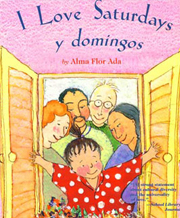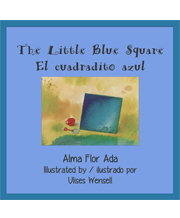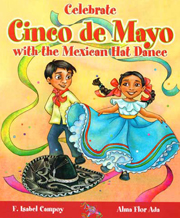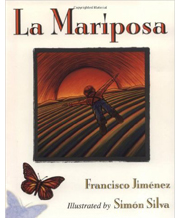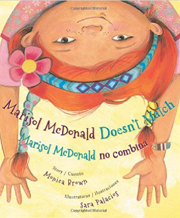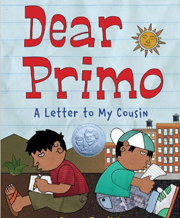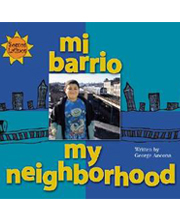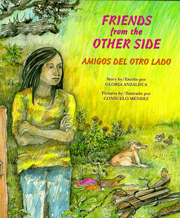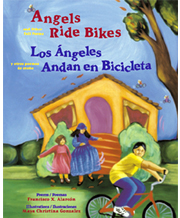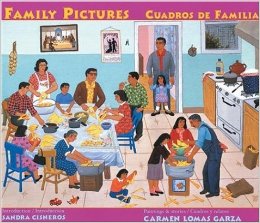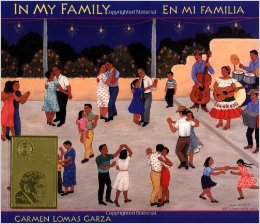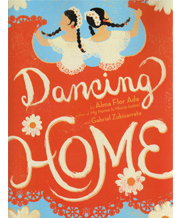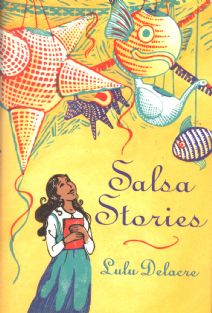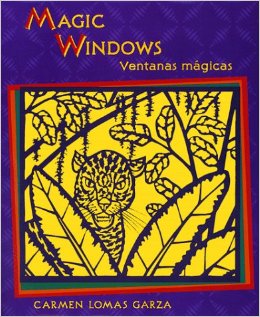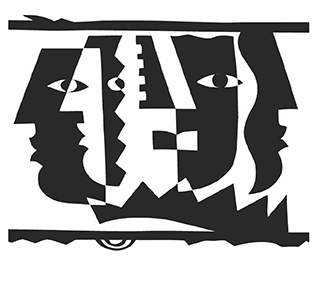
Questions to Initiate and Guide the Creative Reading Dialogue
Descriptive Phase
What do you believe defines a person as Latino, Latina?
Do all Latinos, Latinas look alike?
What are some of the things they share?
What are some aspects of their culture that can make Latinos feel pride?
Personal Interpretive Phase
How do you identify yourself? And your parents, or those with whom you share a home, how do they identify?
Do you consider yourself Latino, Latina? Why?
If you consider yourself Latino, Latina, how does that make you feel?
Are any of your friends Latinos, Latinas?
Critical/Multicultural/Anti-Bias Phase
It is a common mistake to assume that all people who share an ethnicity look alike, speak alike, or think alike.
Why is this dangerous?
Creative/ Transformative Phase
What can we do to make everyone feel comfortable about who they are?
What can we do to know more about our origin, to appreciate diversity?
Activities Students Can Do Individually or in Groups
Encourage students to share what they know about Latinos and have they make a list of things they don’t know and would like to know.
Keep this list available so that you can refer to it at different moments and students can see all they are learning; as well as to add new questions.
Students can create a list of all the countries from where Latinos ancestors come. Later they can identify all these countries on a map.
Students can create a collage mural with photos of Latinos who have contributed to the development of the United States. Not all of them need to be identified individuals, but should include the many workers that have contributed to create this nation and continue to do so. Allow for space alongside the mural for continued expansion as the students’ progress on different chapters of the book.
A Creative Writing Transformative Education Activity
Explain to students that each of us is part of several cultures: our home culture, our school culture, our gender culture, our peer culture, our community culture, our heritage culture, our national culture. Our own identity is tied to different aspects from these various cultures. For example, a student could be:
a boy, a student at Washington School, a member of the chess team, a neighbor of the Mission District, a Californian, a Latino, an American.
a girl, a student at John Muir School, a member of the softball team, a neighbor of Vista Loma neighborhood, a member of the Méndez family, an Afro-Latina, a Cuban-American.
Writing a Where I Come Poem is an excellent vehicle to explore one’s identity. The activity becomes stronger when it begins with the teacher’s poem as a model.
Here is a model poem and instructions on how to proceed:
Where I Come From
F. Isabel Campoy
I come from a street that leads to the desert.
and from a house with balconies facing the sea.
I come from clothes drying under the sun,
and the smell of soap, of Mondays, of work.
I come from María and Diego,
peasants and poets, laborers of love.
I come from jumping rope and playing marbles,
molding mud into cups and sauces, building castles in the sand.
I come from rice and fried chicken,
watermelon, tortillas y pan.
I come from poverty and hard work,
from honor and pride.
I come from a country that lost a war against itself
and suffered 36 years of crime, of silence, of shame.
I come from the certainty of giving voice to our hearts
so that together we create new days of peace.
Full of compassion,
full or pain and pride.
I say: This is where I come from
To write your own Where I Come From poem you can follow these steps, but do not feel limited by them. Feel free to begin each sentence with the words: “I am from…”, “I come from…” or “Where I’m from…”.
1. Imagine yourself at a specific age in childhood: 7, 8, 9, 12 years old.
2. List some of the most memorable items you see in your childhood home.
3. Step outside. List what you see around you: in the front yard, the backyard, the street, the neighborhood.
4. State the names of relatives or caretakers, those who link you to your past.
5. Write down frequently heard words, sayings or expressions. Which sentences that you heard over and over would distinguish your family from others?
6. Name food and dishes from family gatherings, daily meals or special treats.
7. Think of social, political, cultural or educational ideas that were reinforced around you as you were growing up. How do they reflect who you are today?
8. Think about the beginning and ending of your poem: where you are from, who are you, where you are going.
The principles of Transformative Education and the Authors in the Classroom process as well as examples of books created by teachers and students with this topic can be found at: www.authorintheclassroom.com
Specifically in: http://authorsintheclassroom.com/10-from-yesterday-to-tomorrow-where-i-come-from/
Related Books Grades 2-4
.
.
.
.
Related Books Grades 4-8
.

